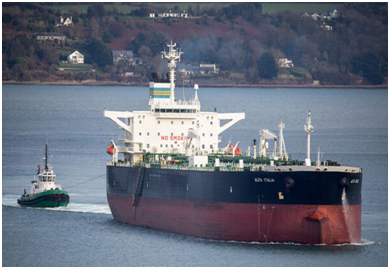
Reducing fuel
consumption and emissions is a key priority for WAN HAI and the wider container
shipping sector, as it looks to drive increased operational efficiencies to
comply with more stringent industry regulations, including CII, EEXI and
mitigate shipping’s price on carbon following its inclusion in the EU ETS, as
well as reaching future targets for global GHG emissions reduction.
WAN HAI has worked with Nippon Paint Marine for
seven years, beginning with the application of the high-end antifouling coating
A-LF-Sea to 20 vessels within its fleet. Performance analysis conducted in 2019 showed that
the product delivered up to 8% fuel and emissions reduction compared to
conventional coatings. A-LF-Sea is a super low-friction coating system that
uses Nippon Paint Marine’s patented Hydrogel water-trapping technology,
resulting in a smoother hull which reduces a vessel’s hydrodynamic drag. This
results in lower fuel consumption – as less power is needed to maintain the
same speed – reducing the cost of operating the vessel, as well as emissions.
In 2021, WAN HAI began
applying Nippon Paint Marine’s next-generation antifouling coating, FASTAR, to
generate further fuel efficiencies and help contribute towards CII ratings for
its fleet. FASTAR has now been applied to 10 vessels across WAN HAI’s global
fleet. The vessels are currently undergoing performance analysis to determine
options for generating additional fuel and emissions saving benefits going
forward.
FASTAR is Nippon Paint Marine’s 4th generation
antifouling system, with self-polishing and self-smoothing capabilities. FASTAR builds upon the company’s patented
Hydrogel water-trapping technology, using nano-binder technology to deliver
precise, predictable antifouling performance, reducing fuel consumption and
emissions, as well as improving drydock efficiency. WAN HAI is now also
considering extending this partnership to explore the use of Nippon Paint
Marine’s AQUATERRAS solution, the world’s first completely biocide-free and
proven self-polishing underwater foul-resistant paint, which can reduce fuel
consumption by up to 10%.
Nippon Paint Marine has applied products using its
Hydrogel low-friction antifouling coatings to more than 4,000 vessels to date, reducing fuel costs and emissions by up to 8%
compared to other makers’ top-of-the-range silyl-acrylate SPC systems without
Hydrogel.
Tags: CII, EEXI, Nippon Paint Marine, WAN HAI